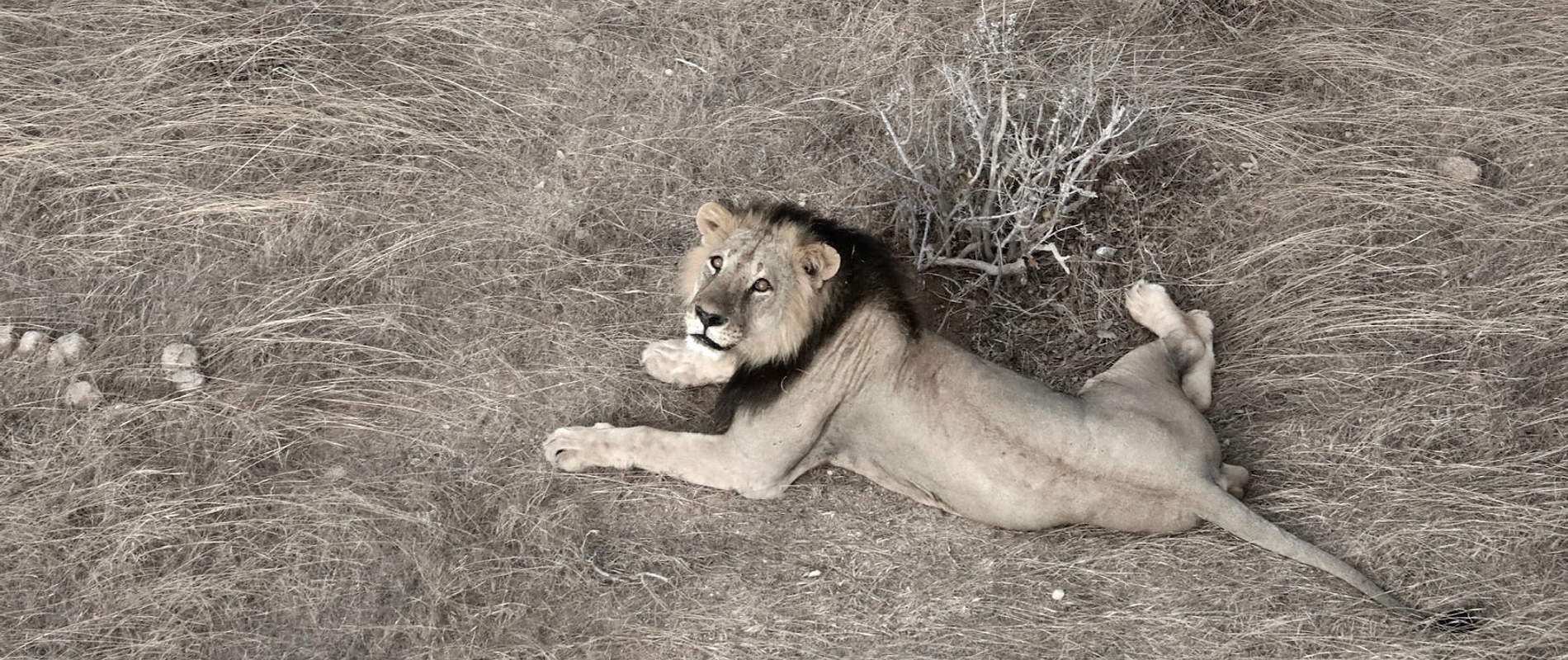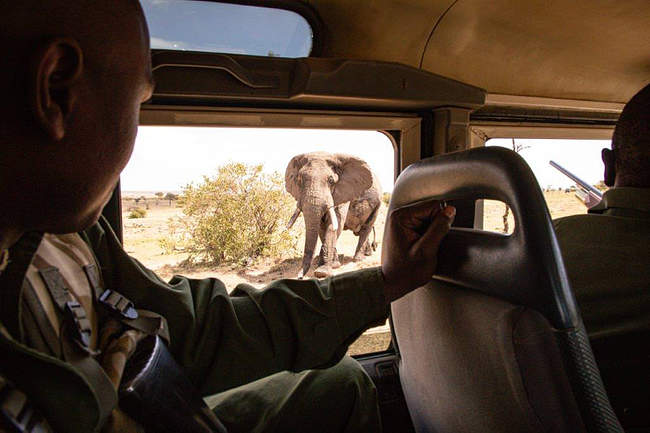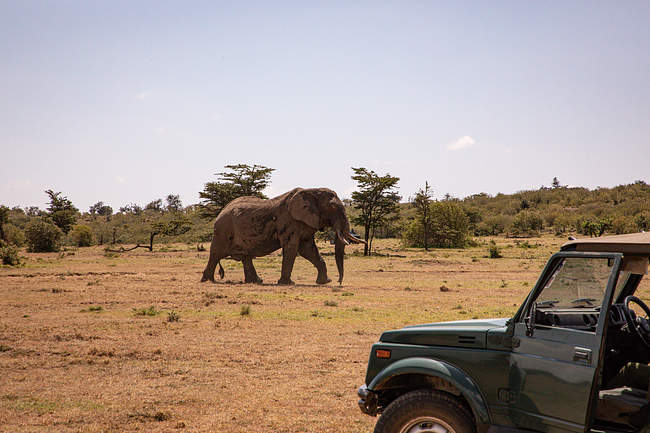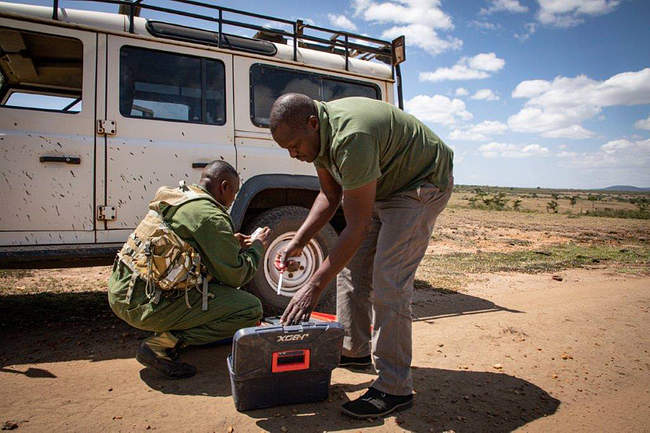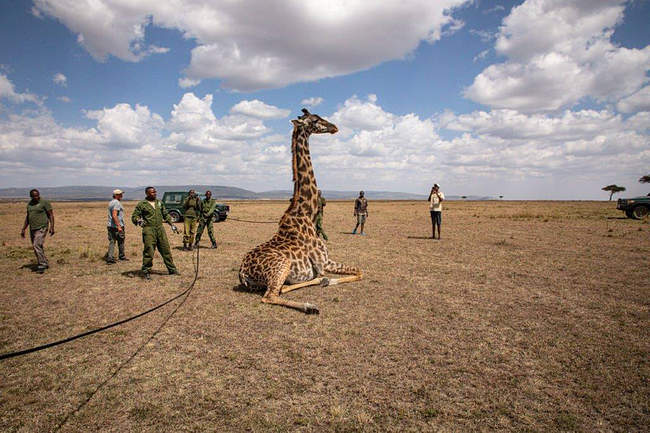Much like last month, veterinary treatments dominated July, with a total of 8 cases responded to by the SWT Aerial Unit. Two cases were first identified by fixed-wing pilots during their daily rounds, demonstrating yet again how aerial patrols save wild lives. While the first case was not considered life threatening, but second case — a bull elephant with an arrow wound — could have been fatal. Fortunately, he was then was darted from our helicopter and successfully treated by the SWT/KWS Tsavo Vet Unit.
In the remote northeastern corner of Tsavo East National Park, one of the SWT/KWS Anti-Poaching Teams discovered fresh poaching activity. This warranted a follow-up helicopter patrol in which three poachers' harbours, 29 snares of various sizes, and a snared kudu were discovered. Ground teams conducting additional foot patrols discovered several well-worn paths leading into the park from the north.

An increase in logging activity was noted in Tsavo East. Three harbours and five fire pits were sighted on one patrol, along with a large number of felled trees. SWT/KWS Anti-Poaching Teams spent several days combing the area and setting ambushes in response. One incident of logging was also noted in the Chyulu Hills, where a felled cedar tree and a logger's harbour were identified.
Charcoal burning was limited to ranches outside of Tsavo East and West National Parks. There was a reduction in aerial coverage on Galana and Kulalu Ranches this month due to pilot availability. However, the Aerial Unit still conducted several patrols, focusing on areas close to the Tsavo East boundary, where extensive charcoal burning activity was noted. Several camps and charcoal kilns were identified, the coordinates of which were shared with ranch management.
Livestock pressure continues in Tsavo West, especially south of the Maktau-Taveta Road. however, we are seeing incremental success in preventing livestock incursions north of the road. While livestock continues to creep back in, we remind ourselves that this period of the dry season is historically the worst time of the year for illegal grazing in protected areas. Given the current drought conditions across much of the country, the situation is actually a vast improvement when compared to previous years.

Other activities supported by the Aerial Unit included the rescue of a two-week-old orphaned elephant from Ole Naishu Ranch in Laikipia, which was transported to the Kaluku Neonate Nursery using the SWT's Cessna Caravan.
Wildlife sightings of note, during July aerial patrols, included various lions and rhinos, an early morning painted hunting dog, as well as a huge herd of 1,000 buffaloes and a group of 25 critically endangered Hirola.
